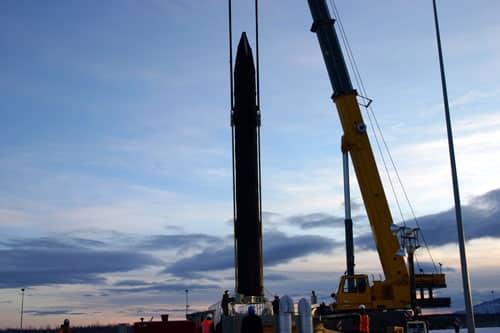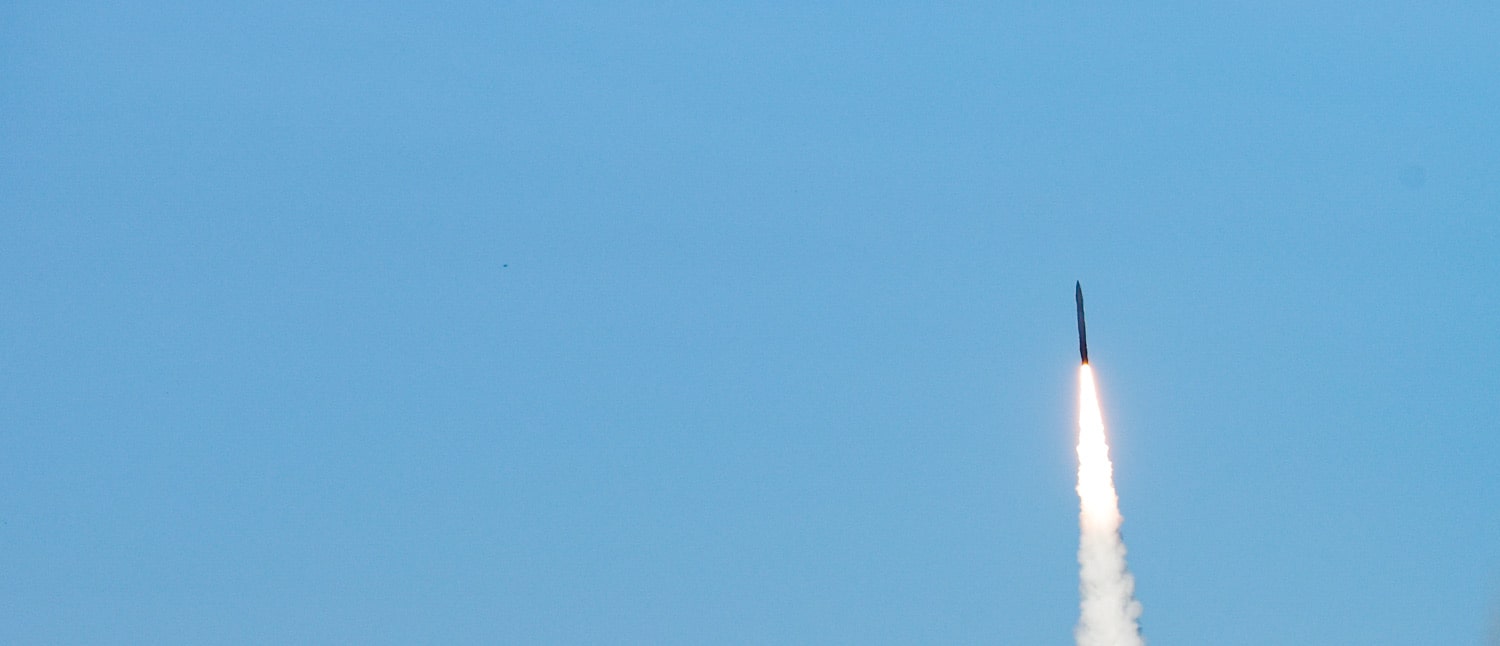12 items, Page 1 of 0
April 7, 2016
The AN/SPY-1 is a multi-function, phased array, 3D air search radar that provides search, detection, tracking, and discrimination data of air and surface targets. It is the main fire control radar for the Aegis Combat System, which equips both Aegis ships and Aegis Ashore sites located in Poland and Romania. First deployed in 1983, SPY-1...
April 25, 2016
The AN/TPY-2 (Army-Navy Transportable Radar Surveillance) is a high-resolution, X-band radar built specifically for missile defense. Developed alongside the THAAD ballistic missile defense system, the AN/TPY-2 is capable of tracking targets at long range and cueing other U.S. missile defense systems. The U.S. Army took delivery of its first production AN/TPY-2 in 2004 and currently...
April 14, 2016
The Cobra Dane Radar Upgrade is an L-band radar located at Shemya Island, Alaska at Eareckson Air Station. It has a single face, 95 feet in diameter, providing 136-degree azimuth coverage. It was originally designed as a missile tracking radar for Soviet missile tests, but was upgraded to perform missile defense missions in 2004. The radar face can...
August 11, 2016
C2BMC Overview The Command and Control, Battle Management, and Communications (C2BMC) system is a hardware and software interface for the ballistic missile defense system (BMDS) that integrates of data from multiple sensors and fire control units. This integration helps to build a common picture of the battlespace for operators across the BMDS, and enables the warfighter...
April 14, 2016
The Defense Support Program (DSP) is a satellite constellation in geosynchronous orbit (GEO) that detects rocket launches and nuclear detonations with infrared sensors. DSP satellites are operated by the U.S. Space Force. DSP’s first satellite launch took place in 1970. Although the constellation remains operational, its military mission is now primarily satisfied by the Space-Based...

April 14, 2016
The Ground-based Interceptor (GBI) is a component of the Ground-based Midcourse Defense (GMD) System. GBIs are silo-launched and intercept ballistic missiles in their midcourse, while they are outside of the atmosphere and at their highest trajectory. The GBI consists of a multi-stage rocket booster (Boost Vehicle [BV]) and a kinetic kill vehicle (Exoatmospheric Kill Vehicle...

June 14, 2018
The Ground-based Midcourse Defense (GMD) is the United States’ homeland missile defense system, designed to protect all 50 states from a limited long-range ballistic missile attack. A global system, GMD and its associated elements span 15 time zones. These elements include Ground-based Interceptors (GBIs) at two locations: Ft. Greely, Alaska, and Vandenberg AFB, CA. GMD integrates...
August 11, 2016
The Long Range Discrimination Radar (LRDR) is a long-range, midcourse tracking radar designed to provide continuous coverage and improved discrimination capabilities to defend the U.S. homeland. The radar is intended to support the layered U.S. BMD defense system to defend against threats emanating from the Pacific and will provide more deployment flexibility for the Sea-Based...
April 14, 2016
The Sea-Based X-band Radar (SBX) is a unique radar housed on a decommissioned North Sea oil rig. The SBX produces very high resolution images of incoming threat clouds, which helps BMD interceptors discriminate between lethal objects and debris. The SBX has contributed to 12 tests of the GMD system and provided tracking and kill assessment for...
August 11, 2016
The Space Tracking and Surveillance System (STSS) is a space-based system developed and operated by the Missile Defense Agency (MDA) that detects and tracks ballistic missiles. This system is an experimental component of the U.S. Ballistic Missile Defense System (BMDS) and STSS serves as a complement to other U.S. space-based platforms and was intended to...
August 11, 2016
The Space-based Infrared System (SBIRS) is a constellation of integrated satellites in geosynchronous orbit (GEO) and high elliptical orbit (HEO) and ground-based data processing and command and control centers. This system is designed to provide early missile warning, cue missile defenses, deliver technical intelligence (TECHINT), and support battlespace awareness. This system is intended to replace...
April 14, 2016
Upgraded Early Warning Radars (UEWR) provide detection, tracking, and classification data to the Ballistic Missile Defense System (BMDS). Currently, three UEWRs are deployed by the United States, located at Beale AFB in California, Fylingdales in the United Kingdom, and Thule AFB in Greenland. The Missile Defense Agency is also working to upgrade the Early Warning...

